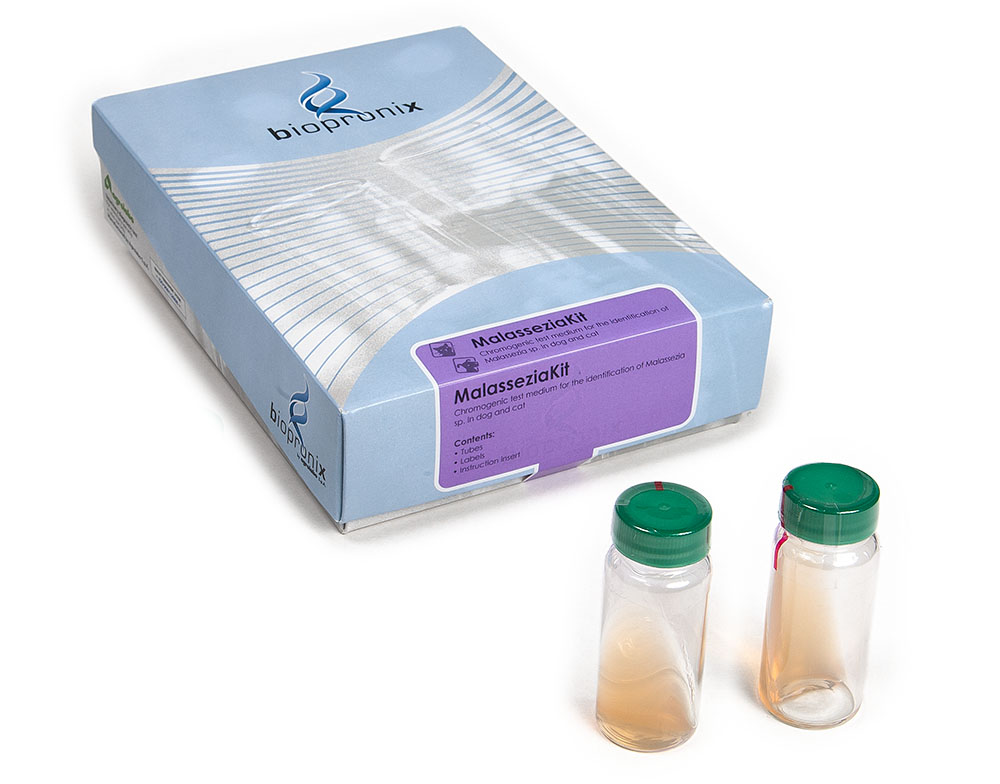MalasseziaKit
Rapid microbiological test for the identification of Malassezia.
MALASSEZIAKIT is a rapid microbiological test for the identification of Malassezia of different species in samples of dog and cat hair and/or earwax.
This Dermatitis is caused by a yeast belonging to the genus Malassezia. All Malassezia species are lipo-dependent, with the exception of Malassezia pachydermatis, which is generally lipophilic. Malassezia pachydermatis is the most commonly found species in mucous membranes and on the skin of cats and especially dogs.
These yeasts are a part of the normal cutaneous microflora and their overgrowth can become pathogenic under certain conditions that lead to a change in the cutaneous microclimate and favour their replication, which causes external otitis and severe itching dermatitis. Malassezia dermatitis is typically itchy and erythematous; secondary lesions such as alopecia, excoriations, seborrheic plaques, lichenification, are common and in these cases, it is not possible to distinguish a Malassezia dermatitis from a staphylococcal pyoderma without a specific examination.
Dermatitis may be localized (ear, face, interdigital spaces, anal area) or generalized.
Malassezia otitis causes itching ears and head shaking. Ear wax is abundant and has a brownish consistency, with a strong rancid smell.
The diagnosis is complicated because Malassezia infection often occurs in association with other diseases according which the differential diagnosis is carried out: atopy, flea allergy, adverse food reactions, superficial pyoderma, external parasites, neoplasms, endocrinopathies and other metabolic disorders that can promote its overgrowth. Other predisposing factors consist of breed (dogs: WHWT, Basset Hound, Maltese, Cocker, Poodle; cats: Sphynx, Devon Rex, Persian), humid climate and warm seasons, presence of skin folds and alterations of the stratum corneum.

